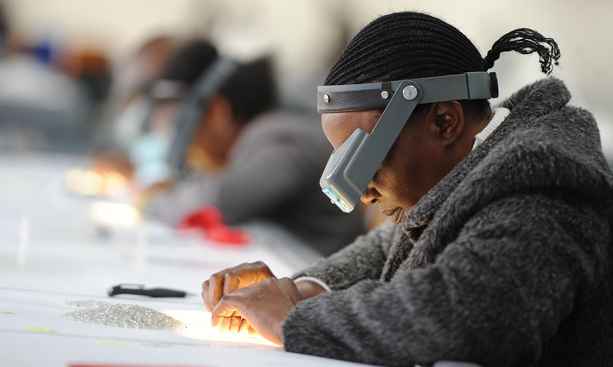Botswana’s diamond production has realised a six percent growth translating into 24.1 million carats in 2018 compared to 22.7 million carats produced in 2017, the De Beers Group of companies has announced.
Presenting the De Beers financial results, De Beers’ Executive Vice-President-Diamond Trading, Paul Rowley said 2018 delivered a robust and operational performance for the Group’s operations.
Rowley was speaking to the company’s financial and operational metrics at the De Beers Global Sightholder Sales in Gaborone on Thursday.
“The company realised a strong consumer demand in the jewelry department,” he announced.
Production at Jwaneng mine, the world’s richest diamond mine, was flat as a 12 percent increase in plant throughput offset the effect of processing of the planned lower grades. Orapa mine, on the other hand, registered a 13% increase in output which was driven by higher plant utilisation and the full effect of the successful restart of the Damtshaa operation, which saw over 250 employees redeployed back to the mine after they were transferred elsewhere during the mine’s temporary closure.
The Damtshaa mine was temporarily closed after Debswana diamond mining company decided to reduce diamond production in 2015 following weak demand for diamonds. The closure was motivated by the partners’ move to optimise revenue and distributions by maximising production at core assets, scaling down production at lower value and lower margin assets.
The mine had in 2014 extracted 3,800,849 tonnes of ore, treated 1,464,100 tonnes and recovered 303,219 carats before it was placed on care and maintenance. During the temporary shutdown, Orapa Mine plant 1 was run at a reduced production level of approximately one million carats per year.
Botswana’s diamond output contributed to the De Beers Group’s total revenue that increased by 4 percent to USD 6.1 billion in 2018 compared to USD 5.8 billion in 2017. Rough diamond sales increased from USD 5.2 billion in 2017 to USD 5.4 billion, a 4 percent increase.
The increase is driven by improved overall consumer demand for diamond jewelry as well as a 1 percent increase in the average rough diamond price index.
“The average realised price increased by 6% to $171/carat (2017: $162/carat), reflecting the lower proportion of lower value rough diamonds being sold in the second half, which resulted in a 2% decrease in consolidated sales volumes to 31.7 million carats (2017: 32.5 million carats),” reads a statement from the Group announcing the company’s 2018 financial year performance.
The company’s other revenue also increased owing to improved high end jewelry sales. The sales are partly offset by a 5 percent decrease in Element Six revenue due to a reduction in sales to the oil and gas market.
“Underlying EBITDA decreased by 13% to $1,245 million (2017: $1,435 million),” the report states, continuing that while unit costs and upstream profit margins were maintained, De Beers undertook incremental expenditure on a number of new initiatives, including the launch of Lightbox Jewelry.
The statement continues that the preliminary data for 2018 indicates an improvement in global consumer demand for diamond jewelry, in US dollar terms.
“Global growth during the first half of the year was driven by solid US and Chinese consumer demand. However, during the second half, while the US maintained its growth rate, increased political and policy uncertainty and stock exchange volatility led to a general slowdown of demand,” it continues.
The group also realised that the Chinese demand slowed following the escalation in US-China trade tensions, slower economic growth and stock market volatility while in India, the significant depreciation of the rupee reduced local demand in US dollar terms.
